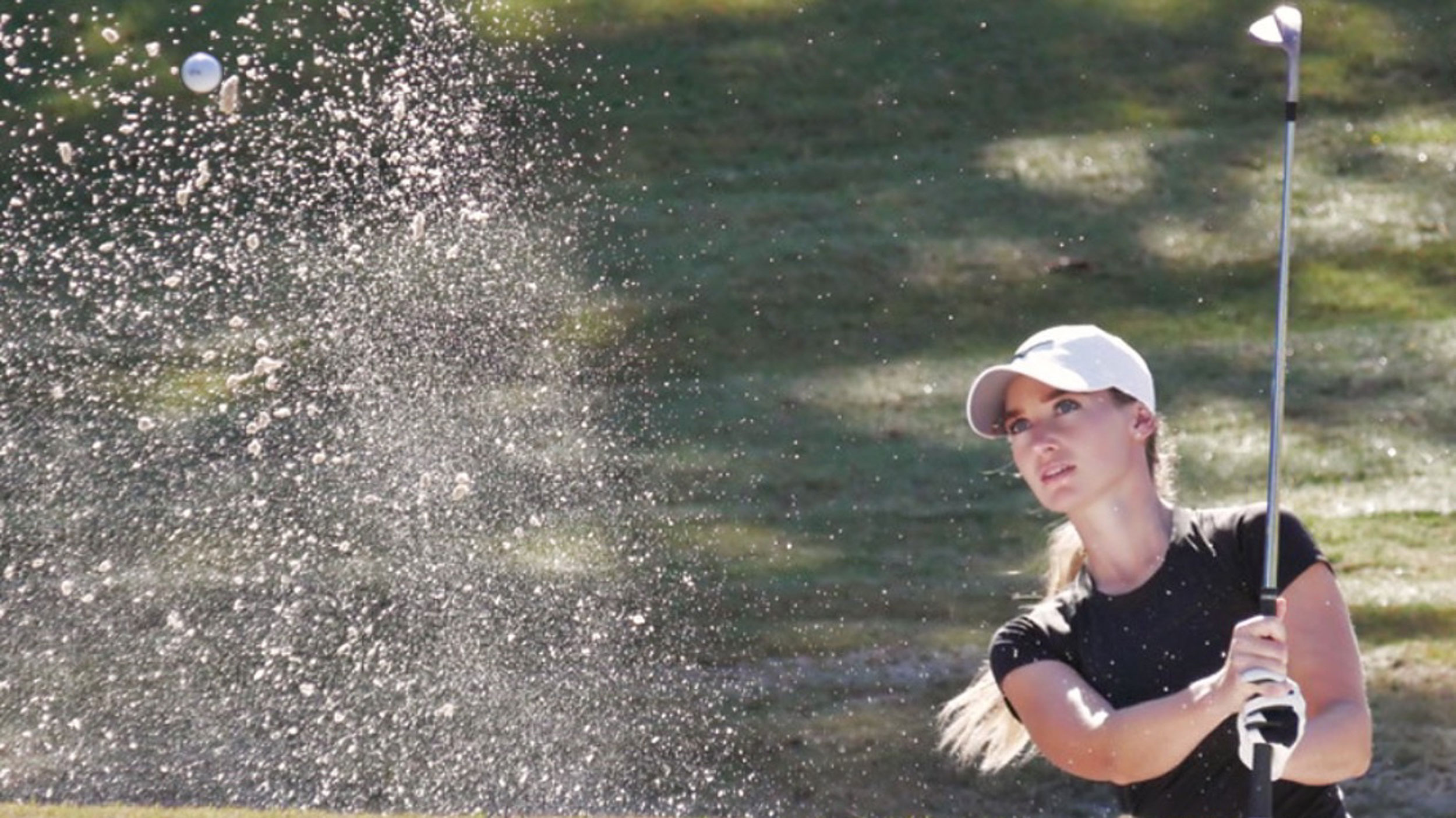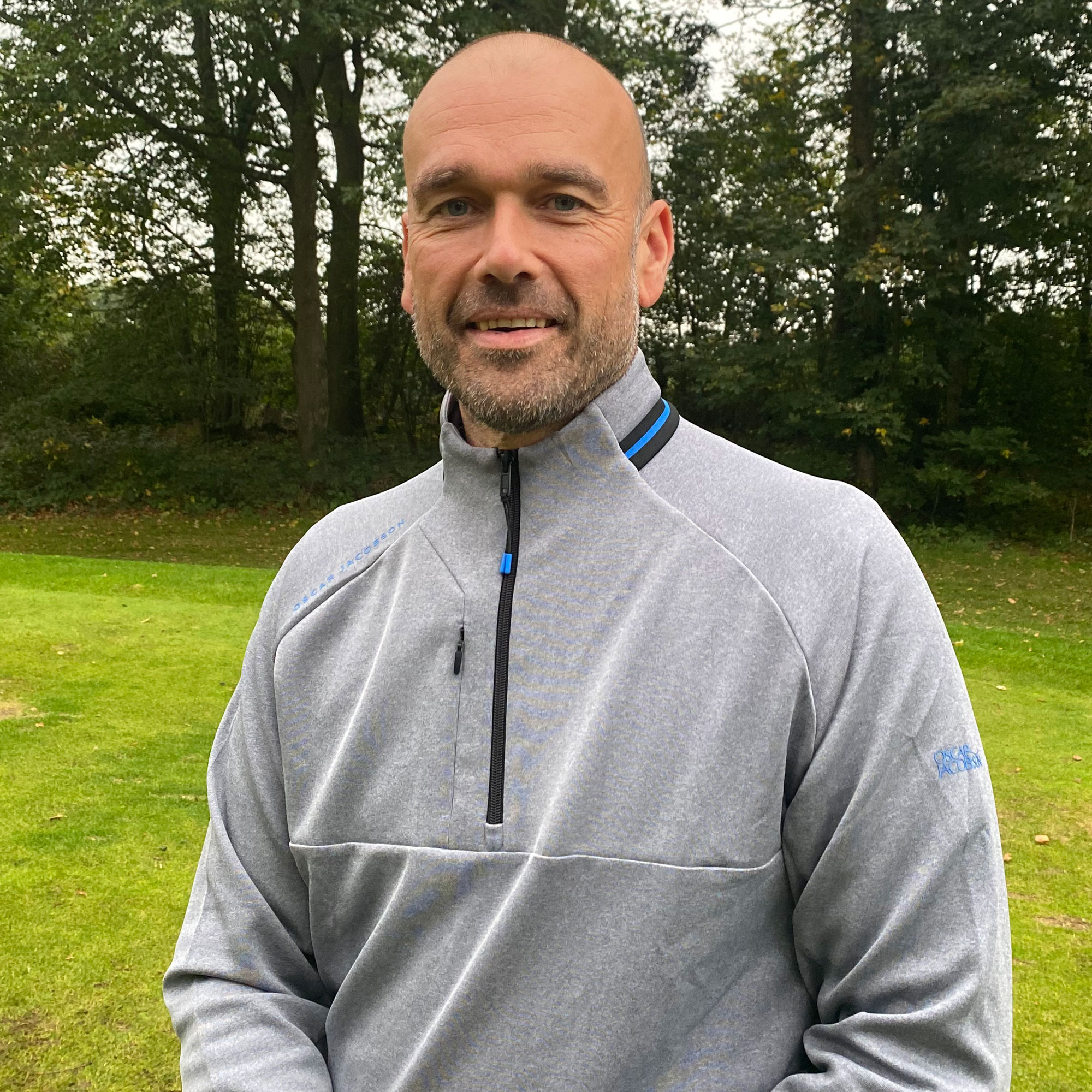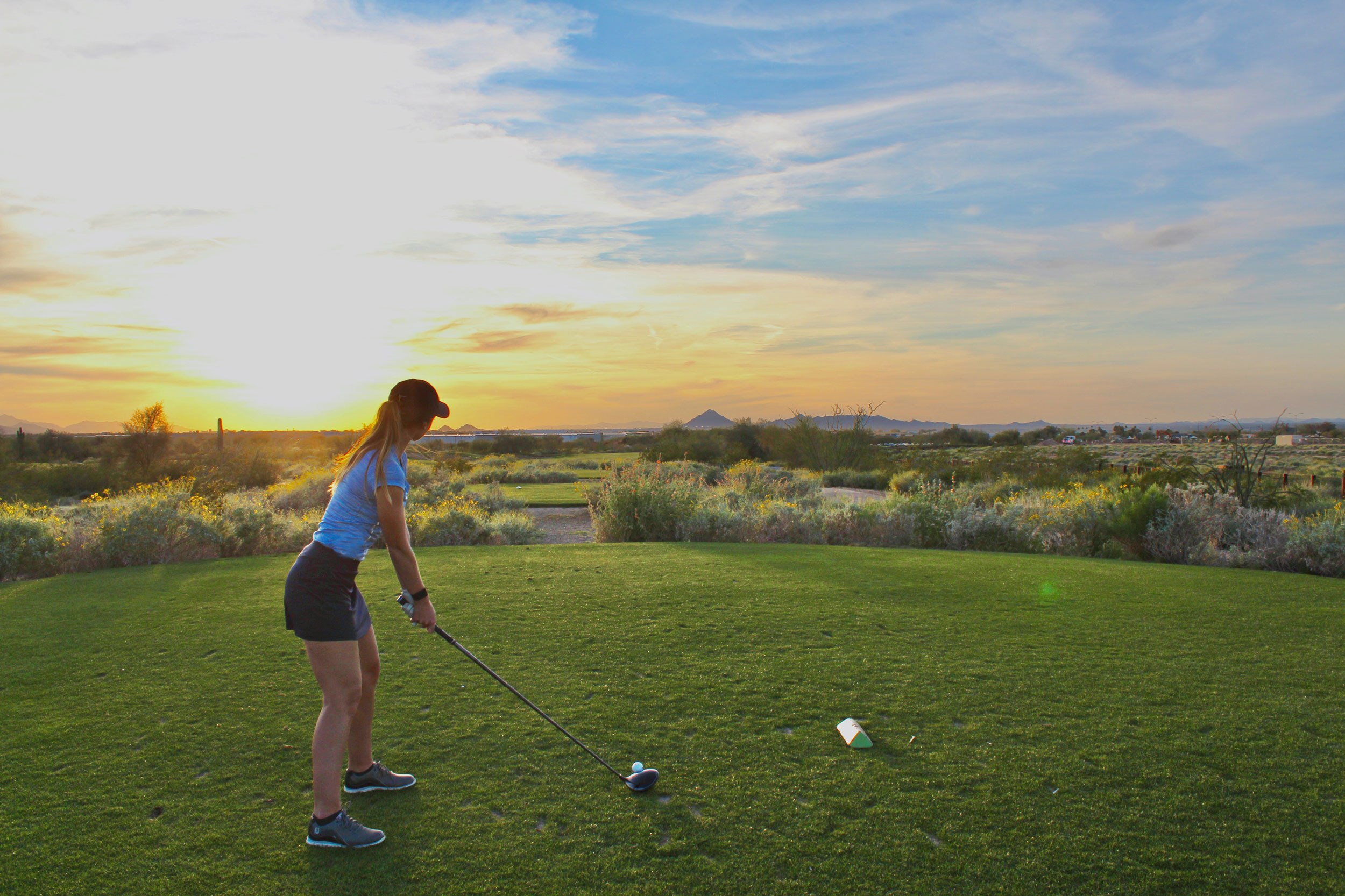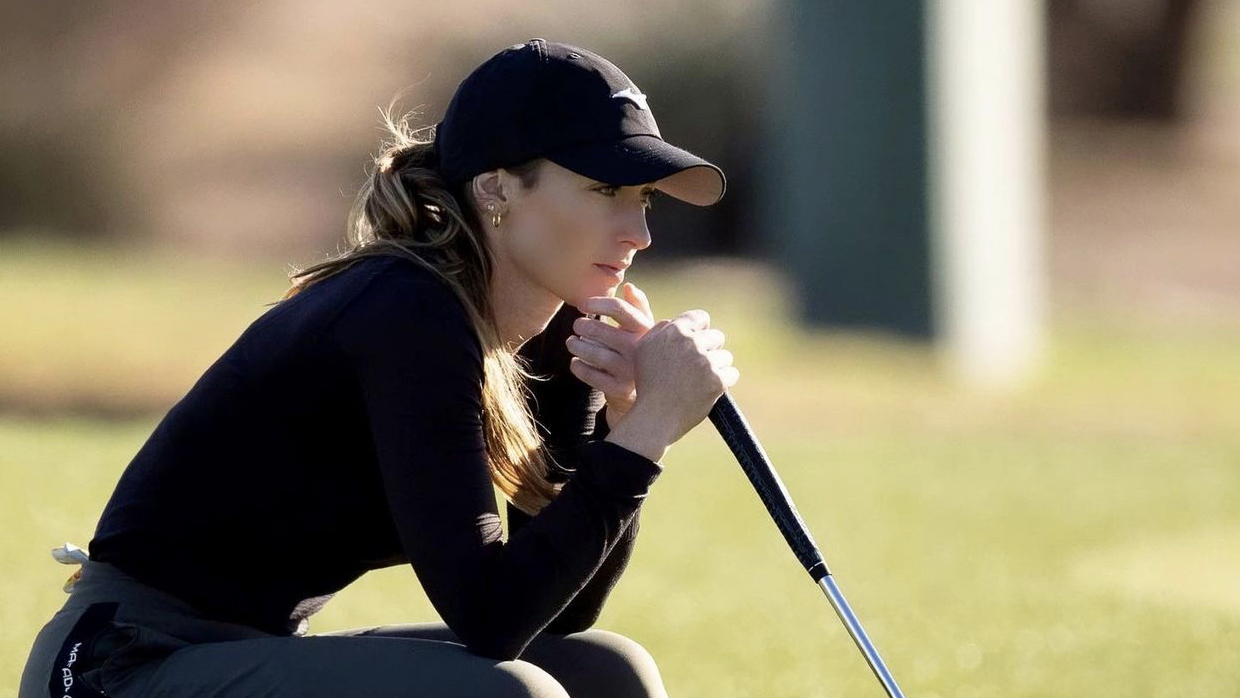'Lots Of Girls Stop Playing' - Female Pro Reveals Financial Strain
Hannah Gregg, who plays on the LPGA's development Symetra Tour, says the costs of golf are proving too much even for serial winners


Hannah Gregg: 'Lots Of Girls Stop Playing' - Female Pro Reveals Financial Strain
There is a common misconception in golf that if you are good enough, you simply turn pro and, financially, the rest will take care of itself.
For a fraction, this may be true. But what about the masses who have to work their way through the grind of the development tours where exposure and sponsorship is desperately lacking?
Golf has for too long suffered from an uncomfortable asymmetry, where the top takes care of itself and little else. With every eye-watering sponsorship deal comes the promise of ‘growing the game’ – but when was the last time you accepted these words with any real substance.
In any sport, the lower leagues have always been the toughest battlefields, but according to Hannah Gregg, a 26-year-old Symetra Tour player from Auburn, California, there is no tougher battlefield than the depths of women’s professional golf.
Financially, the competition comes from just trying to break even week to week and for Gregg, who is in her second year as a professional with status on the official feeder tour of the LPGA – something needs to be done to help guide potential stars towards securing a career in top-level golf.
Playing professionally, in nutshell, is just too expensive...
Get the Golf Monthly Newsletter
Subscribe to the Golf Monthly newsletter to stay up to date with all the latest tour news, equipment news, reviews, head-to-heads and buyer’s guides from our team of experienced experts.
Slim pickings...
“Before I turned pro, when I was getting ready to finish college, I asked a few of my friends who had turned pro what the hardest part was,” Gregg says.
“I was trying to get a head start and prepare myself for whatever was coming my way, and was expecting them to say finding tournaments, travelling every week, or missing your family. But all of them said the hardest part was finding the money to cover expenses to keep playing every other week.
“So that was quite a shock. Everyone kind of assumes if you’re good, that part takes care of itself. But entry fees, flights, hotels and rental cars don't take care of themselves. Even winning on these tours doesn’t mean much more than breaking even over a few months.”
While some families have the resources to offer support, Gregg says hers could help with expenses in her earlier days in high school, while she would receive free lessons from her local club pro.
But not now...
Today, everything is done in the cheapest way possible and every dollar is accounted for. If expenses get out of hand, then one top-heavy week can mean sitting out the next.
“My annual expenses cost on average $50,000, and if you look at the purses on the development tours like the WAPT (Women’s All Pro Tour) – which is the highest paying feeder tour – the average winner walks away with $5-$7,000.
“Expenses for a cheap tournament are generally $1,500-$2,000, so unless you finish 1st, 2nd or 3rd in every single event, you’re not going to make a profit.
“Expecting to average top-three for an entire season is not feasible. Even the best players on tour miss cuts and have bad stretches.
“Not to mention when you do play well and start winning, you generally start moving up to the next level where travel and accommodation are even more expensive.
“Suddenly, you have to figure out how to pay a caddie.”

Taking aim: Hannah Gregg is eyeing future success
Making ends meet
Gregg admits she knows of too many good players who have been forced to give up the game due to a lack of financial stability, adding that it is not uncommon for players to qualify for events and subsequently withdraw because they cannot afford the flight.
“Lots of girls stop playing because they can’t afford Q-School, which is the most expensive event of the year.” she says. “If you don’t play in that then you have no Tour status and are left with very few events to play in. You get phased out and others just lap you.”
So where does the counterpunch come from? How do you look to maximise potential?
Social media, Gregg says, has played a huge part in raising awareness and funds. This perhaps explains why female golfers have tapped into the potential riches of Instagram – perhaps more so than male players – and other platforms to promote their profiles in order to create positive sidelines.
Growing social media status – with the development tours and women’s golf in general lacking the relevant TV exposure compared to the men’s game – gives Gregg a bargaining chip to attract sponsors.
The tactic has worked to an extent, with over 150,000 followers across Twitter and Instagram no doubt helping secure help and partnership deals with the likes of FootJoy, Bushnell, Bridgestone, Mizuno and GOLFTEC.
“My sponsorships are mostly corporate and e-commerce businesses that exchange compensation for exposure on my page,” Gregg says. “The brands are interested in my story and my audience online.
To help further supplement her ‘golf income’, Gregg has started her own company alongside her sister to help small businesses with their social media marketing, called Cozy Co. Social. Last year, she also launched a golf training aid line with her boyfriend – Short Game Gains – which has grown exponentially to be her main source of income with shipments all over Europe.
And yet, it is still not enough. In fact, it is nowhere near enough.

Hannah Gregg says social media is a big factor in players gaining exposure
Fighting talk...
“The biggest issues are the purses,” Gregg says. “It’s very frustrating because everywhere I go, people are interested to learn and watch what we do, and I have tons of supporters across social media.
“But when it comes to making purses bigger and getting donations from sponsors, everyone has an excuse.
“I always hear ‘well the women aren’t fun to watch’ but I’ve never understood that. The men weren’t popular to watch compared to the scale they are now. It takes years of marketing and people engaging with women’s sports for them to have a chance to succeed and grow.
“If people really want to help, we should start building up women’s sports and acknowledging that there is a quality product there. Help us raise money when you can, spread the word and find players that you like to watch and then follow their careers.
“All of us love knowing that people out there are enjoying our journey and it makes even the struggles that much more enjoyable.”

Alex began his journalism career in regional newspapers in 2001 and moved to the Press Association four years later. He spent three years working at Dennis Publishing before first joining Golf Monthly, where he was on the staff from 2008 to 2015 as the brand's managing editor, overseeing the day-to-day running of our award-winning magazine while also contributing across various digital platforms. A specialist in news and feature content, he has interviewed many of the world's top golfers and returns to Golf Monthly after a three-year stint working on the Daily Telegraph's sports desk. His current role is diverse as he undertakes a number of duties, from managing creative solutions campaigns in both digital and print to writing long-form features for the magazine. Alex has enjoyed a life-long passion for golf and currently plays to a handicap of 13 at Tylney Park Golf Club in Hampshire.
-
 JM Eagle LA Championship Prize Money Payout 2025
JM Eagle LA Championship Prize Money Payout 2025The LPGA Tour heads to California for the JM Eagle LA Championship, where the largest prize money payout of the season so far is on the table
By Mike Hall
-
 Corales Puntacana Championship Prize Money Payout 2025
Corales Puntacana Championship Prize Money Payout 2025The PGA Tour’s latest opposite field event features an attractive prize money payout and some former champions in the field
By Mike Hall